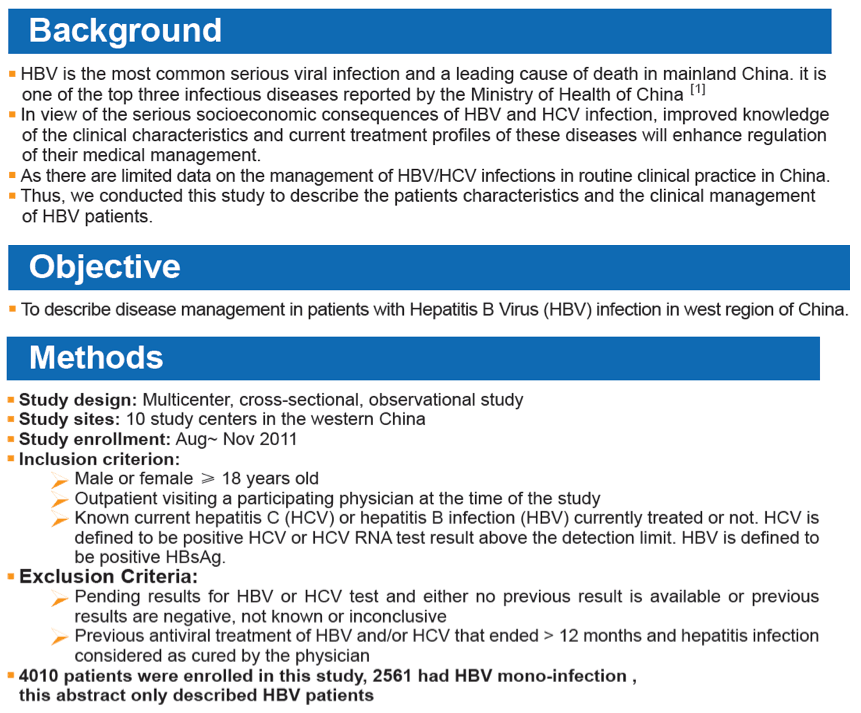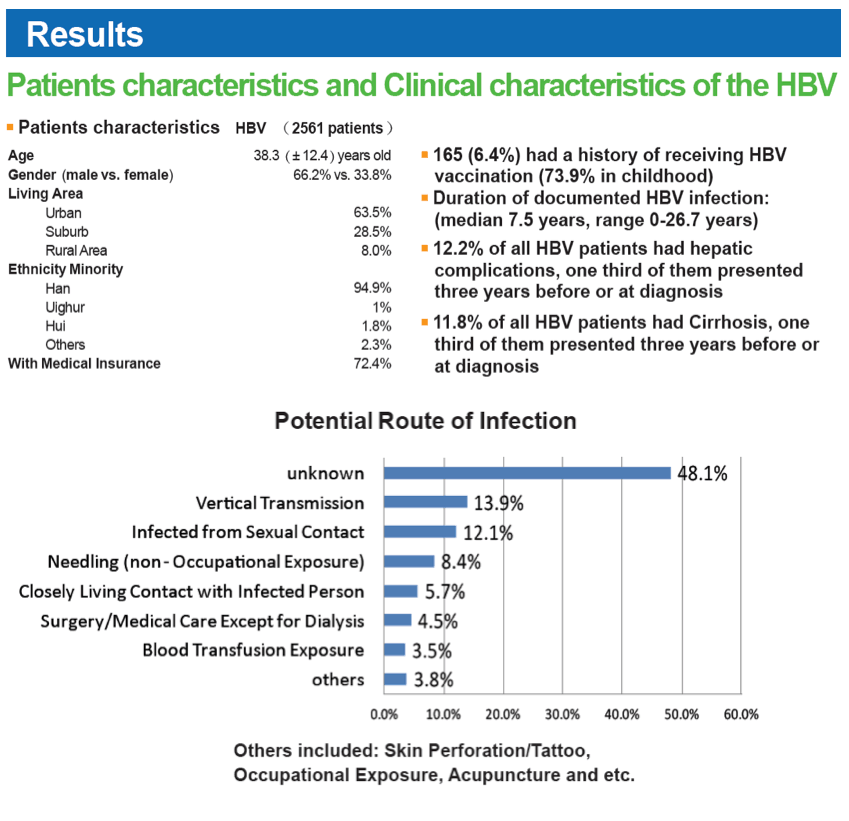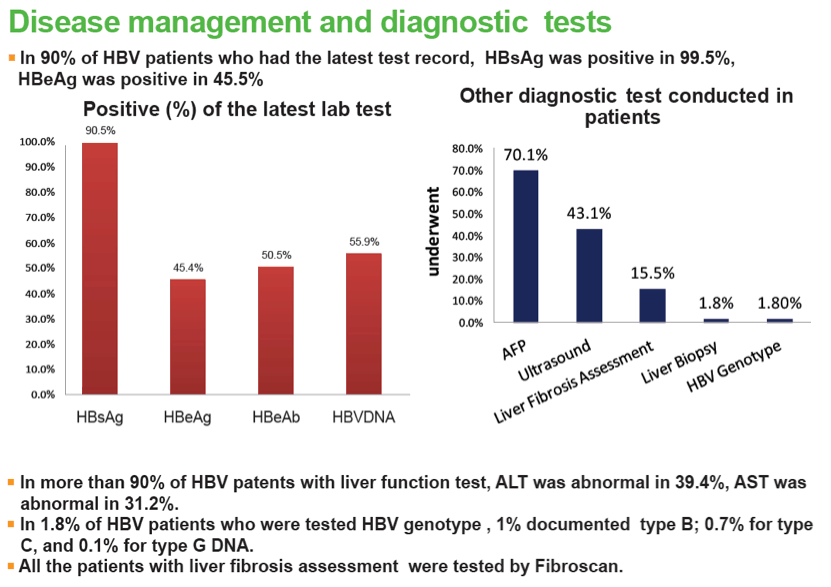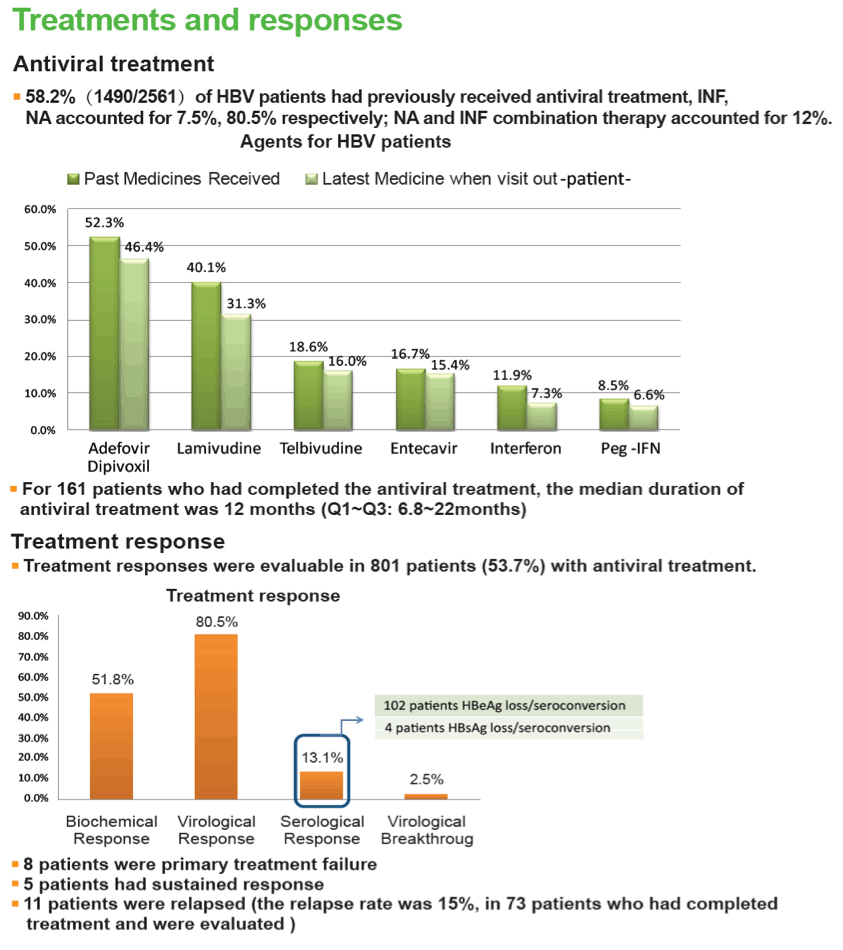 |
 |
 |
| |
Hepatitis B Virus Infection in Western Region of China
|
| |
| |
Reported by Jules Levin
APASL 2013 Singapore June 6-10
Yongtao SUN
Tangdu Hospital, Affiliated to the Fourth Military Medical University, Xi'An, China
CONCLUSION
Our study demonstrates that nearly half of the HBV infected patients were not being treated with antiviral agents . Most of the patients with antiviral treatment received NA therapy, Adefovir Dipivoxil was the most common used agents. The virological response rate is lower than expected. For achieve better treatment target, initiated antiviral treatment should be optimized and patient's adherence should be improved.
ABSTRACT
[Background/Aims] To describe disease management in patients with Hepatitis B Virus (HBV) infection in west region of China.
[Methods] A multicenter cross-sectional study of HBV or Hepatitis C Virus (HCV) infected patients was conducted during 15/08/2011 to 22/11/2011 at 10 hospitals , data was collected on the day of visit from medical records and interview of patients. For this abstract, patients with HBV mono-infection were analyzed.
[Results] 4010 patients were enrolled in this study, 2561 had HBV monoinfection. The mean age was 38 years with 66.2% of males and 7.5 years of median infection duration, 12% of patients had hepatic cirrhosis.
HBeAg and HBeAb were positive in 45.4 % and 50.5% respectively.
The antiviral treatment rate was 58%, among the patients with current or most recent antiviral therapy data, 86% received nucleoside/nucleotide analogues(NA), 9% received interferon or pegylated interferon(INF), 5% received combination therapy of NA and INF.
In the patients with antiviral evaluation, 80.5% had virological response, 13.1% had HBeAg loss/seroconversion (102) or HBsAg loss/seroconversion (4). Traditional Chinese Medicine including herbs was the most frequently used alternate treatment.





|
| |
|
 |
 |
|
|